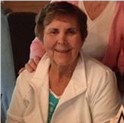Carol B

I am 75 years old and have led a very active life, including exercising five times a week, golfing, volunteering, and gardening. Several years ago I was diagnosed with lichen planus, a disease that can cause pain while sitting, but it did not affect my quality of life. Then, in February 2015, after driving eight hours to visit my daughter, suddenly I started experiencing severe pain that limited my activities. Thinking it was related to lichen planus, I went to my dermatologist. I was diagnosed with vulvodynia. Since the diagnosis, I have had pain daily for seven months. I was treated with amitriptyline and gabapentin up to the highest tolerable doses. That gave me minor relief, but the side effects were as life-changing as the pain: extreme constipation, severe dry mouth, canker sores, and most significantly, loss of short-term memory and word retrieval in conversations. For four months I was unable to do any of the activities I previously enjoyed. Even sitting in church for an hour was extremely difficult. I found a specialist at a large university hospital who confirmed the vulvodynia diagnosis and treatment. She ordered a few additional creams that made no difference and then suggested a pudendal block. My goal was to reduce the pain level to a five and resume a lifestyle I could manage. Sadly, after four different types of blocks, I had no relief and still had intense pain many days. I have learned to cope by managing the amount of time I sit each day, using some home remedies, trying to enjoy my garden, and making choices between activities I can tolerate. Through months of independent research and the support of the NVA, I have found a vulvodynia clinic at another university hospital and we are starting over and working together to find the right balance of medications and dosages. I am slowly building my strength back up after being able to do very little for seven months. I’m beginning to sit and read, socialize and continue to garden. However, it is a very slow process. Some days the pain is a five and other days it goes up to a seven, even after light activity. I was fortunate to be diagnosed quickly, but finding the right team of specialists to manage my treatment and my expectations has been a challenge. The NVA has been very helpful, encouraging me through this journey. My hope is that I will continue to get stronger and return to most of my daily activities with manageable pain. Throughout this process, I have educated many physicians, friends and family members about vulvodynia. I also want to help educate the medical community so others with this condition can find experts and relief much sooner than I did.